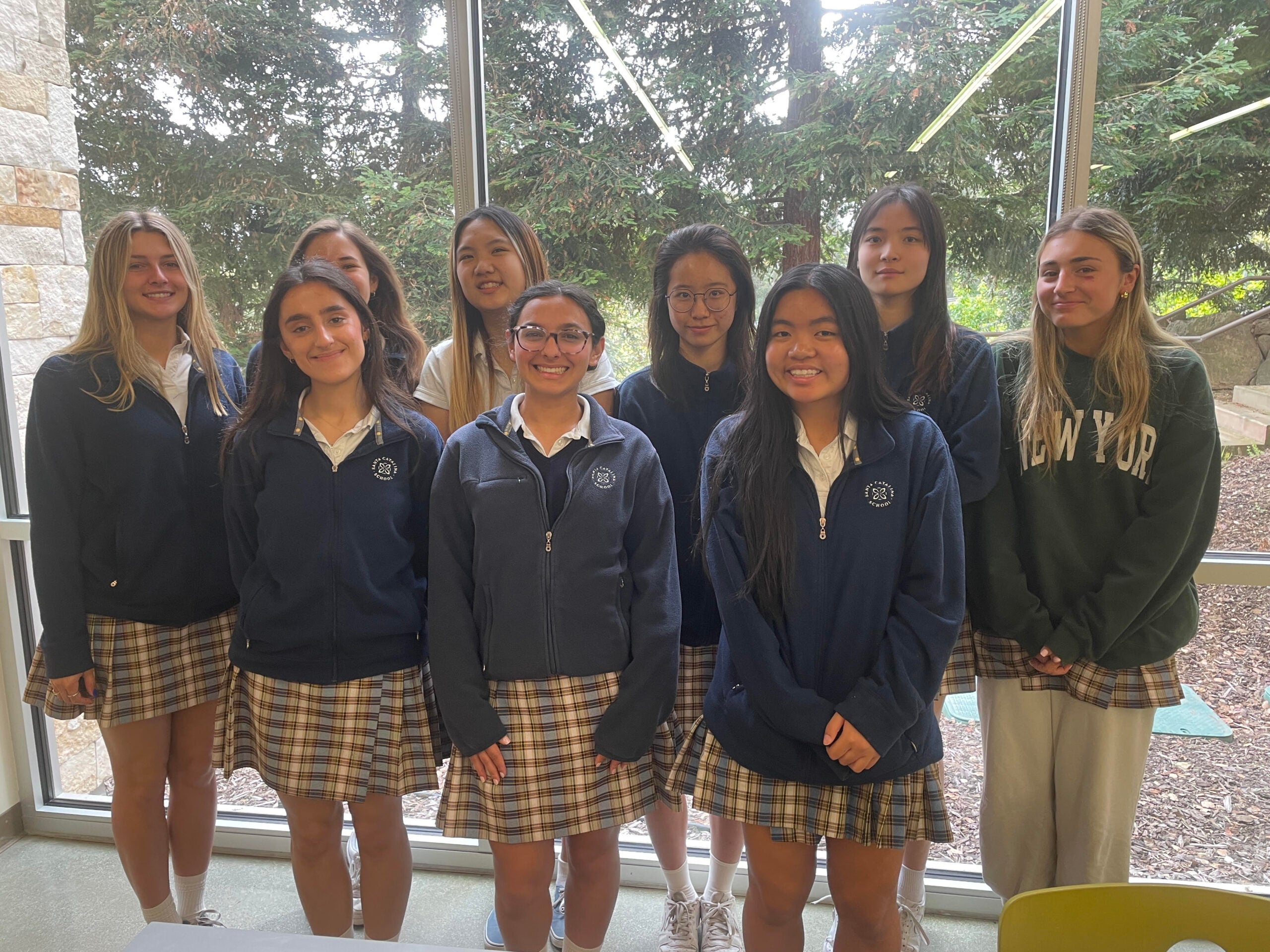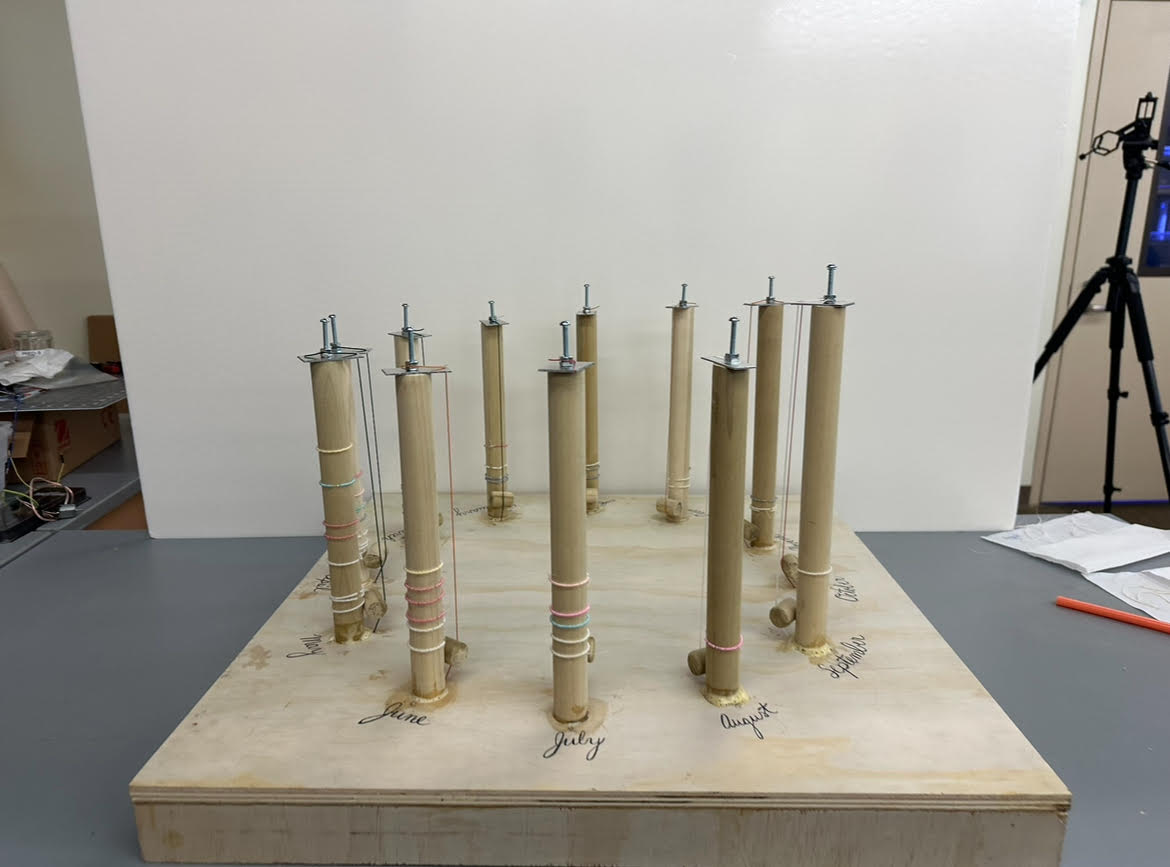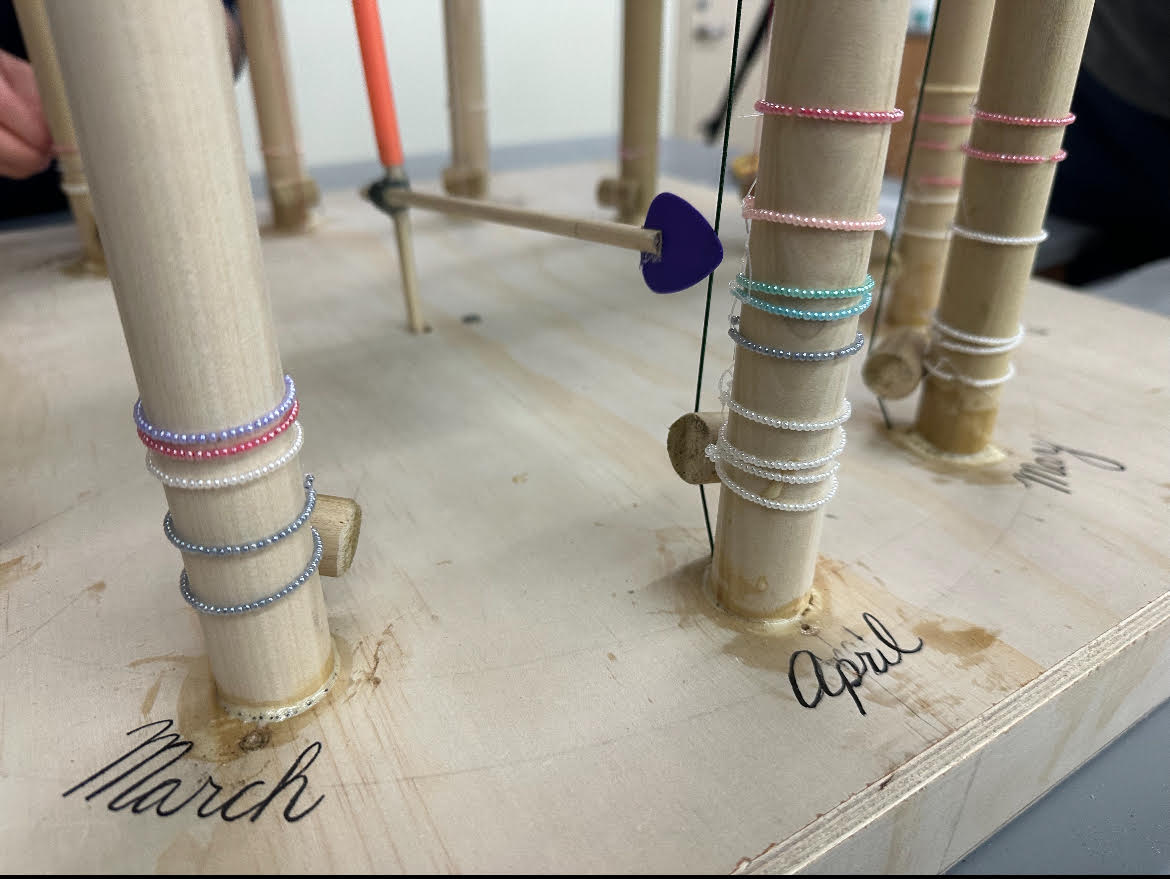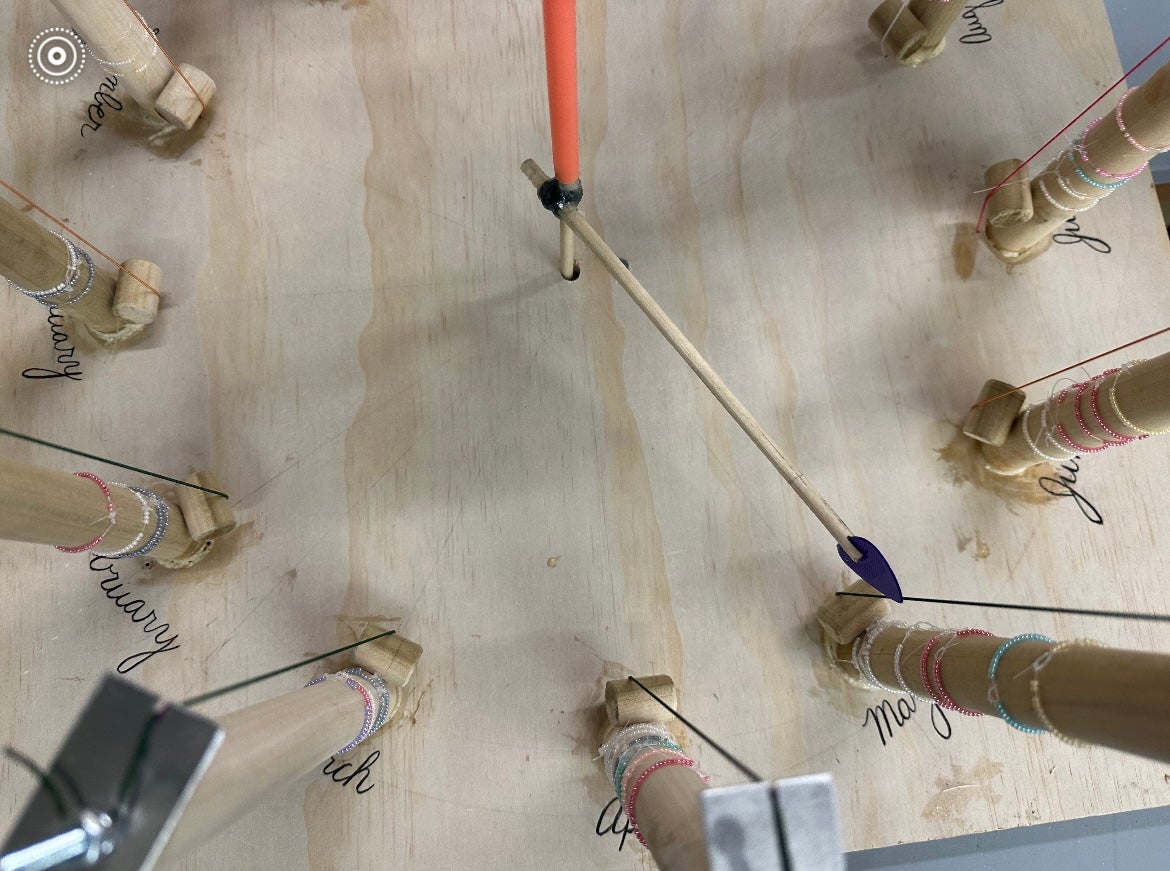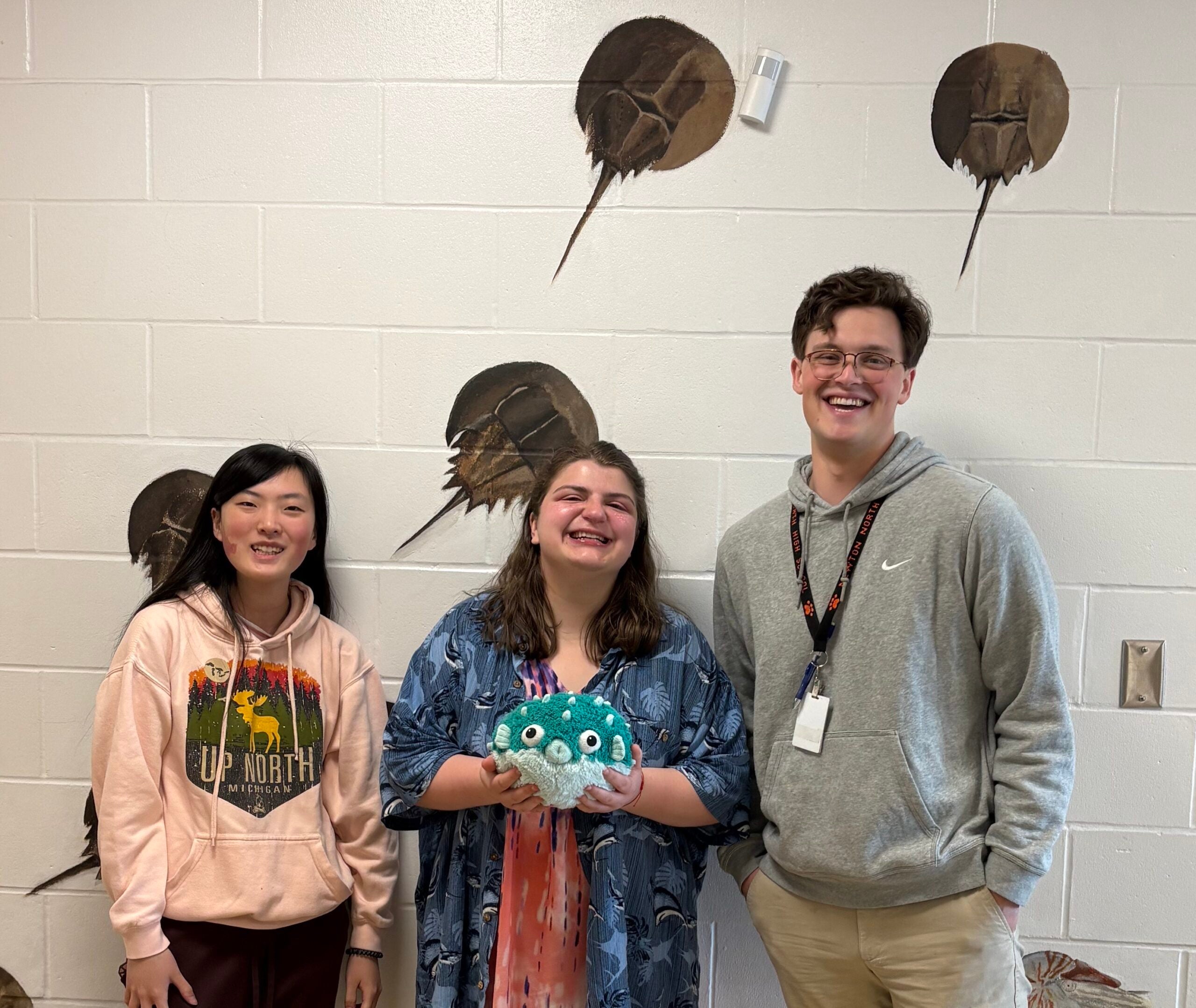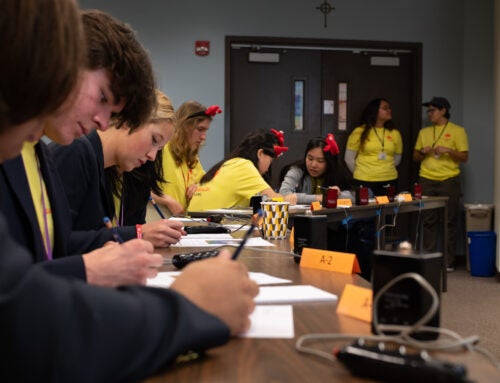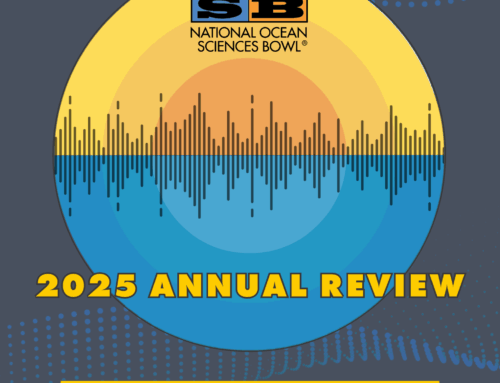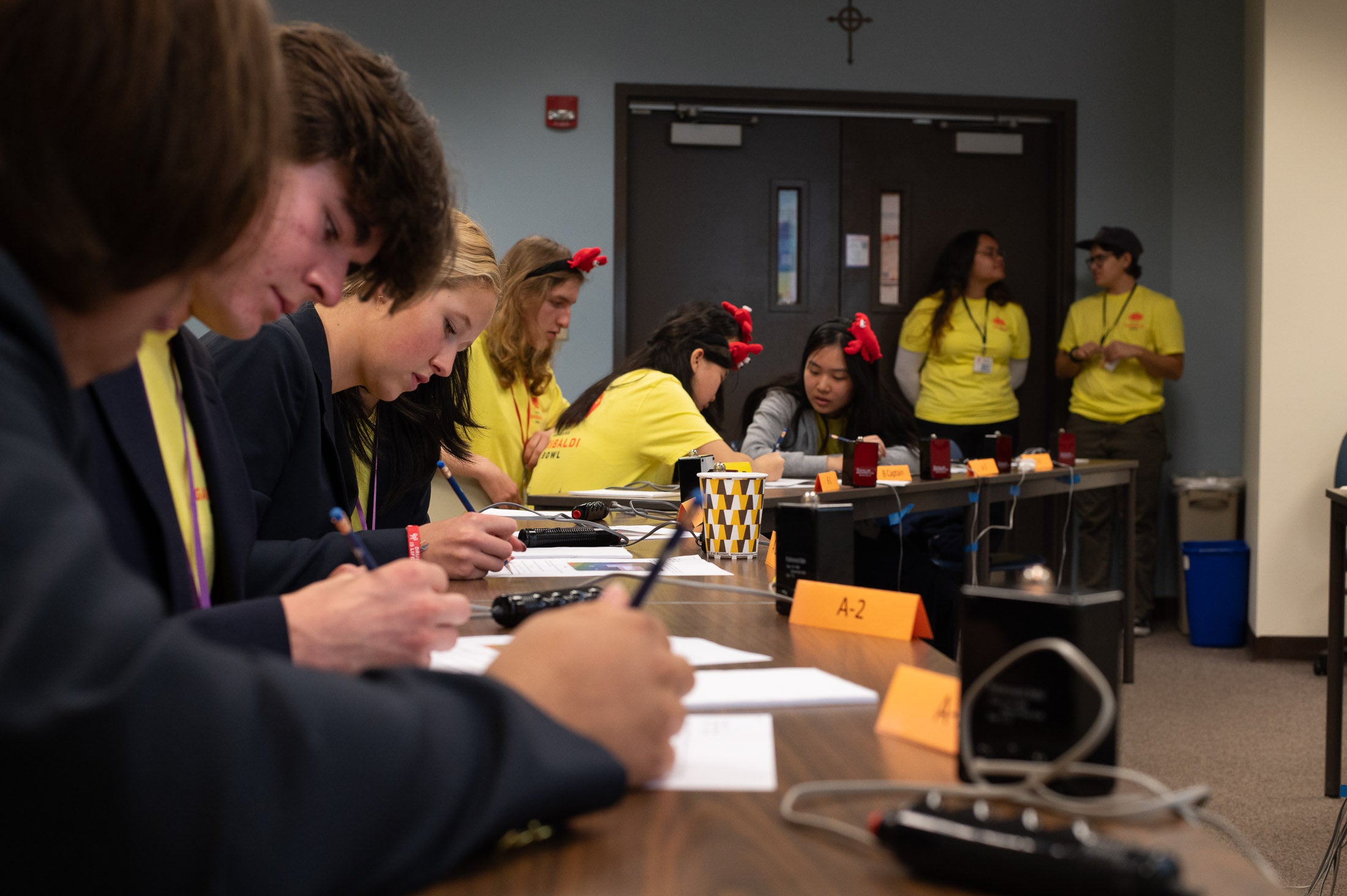In a celebration of integrating art and science, the NOSB is proud to announce the top two winners of its STEAM Leader Challenge on ocean acoustics. This challenge invited high school students from across the country to explore their choice of ocean acoustic data through the lens of art, whether as a painting, digital media, sculpture, interactive installation, or sound design.
Students created engaging artistic representations of oceanic phenomena that highlighted the importance of their chosen data in an interesting way to engage an audience. Two teams showed how data can not only inform our understanding of the ocean, but inspire creative solutions to protect it and the life within.
First Place: “Sounds of Monterey”
Taking first place are Sofia Vea, Grace Ge, Jasmine Choi, Sophie Gong, Allie Fieber, Tanusha Mehtani, Anna Halim, Piper Butler, Coco Xu, and Natalie Powell from Santa Catalina School (Monterey, CA). The team’s submission, titled “Sounds of Monterey,” is an interactive installation that uses guitar strings and wooden poles of varying heights to create different sounds. Inspired by how spectrograms use color to represent sound frequency, the students incorporated different colored guitar strings to reflect the variability of surface water temperature across the twelve months of the year. Hotter temperatures produced higher-pitched sounds, while colder temperatures produced lower-pitched ones. Each month’s pole also featured colored beads to indicate the abundance of whale species in Monterey Bay (e.g., Humpback, Blue, Minke, etc.). The students were inspired by the emotional impact of different chord progressions and aimed to evoke distinct feelings in their audience.
Second Place: “Sound in Coral Reefs”
Second place went to Marcy Greenberg and Robin Lee from Newton North High School (Newton, MA). Their submission, titled “Sound in Coral Reefs,” features two pieces of visual art accompanied by distinct soundscapes that highlight both natural and human-made sounds in bleached and healthy coral reef systems. The first piece depicts a colorless, bleached reef accompanied by only two sounds: the faint crackle of shrimp, the sole surviving organisms, and the hum of a personal watercraft, symbolizing the impact of anthropogenic sound pollution. The second piece portrays a vibrant reef restored by researchers who used hydrophones and underwater speakers to play recordings of healthy reefs, attracting species back to the area. The students created their own healthy reef soundscape by combining recordings of organisms commonly found in Indo-Pacific reefs. They were inspired to show how sound affects marine life, hoping to spread awareness about how to better protect and restore coral reefs. Note: The current project videos featured below are only short clips and the full length videos of the team’s art project will be added soon.
The NOSB congratulates our winners on their imaginative, insightful work!
The NOSB STEAM Leader Challenge is supported by the Office of Naval Research and created in partnership with Scoutlier, a free online learning platform for educators.

